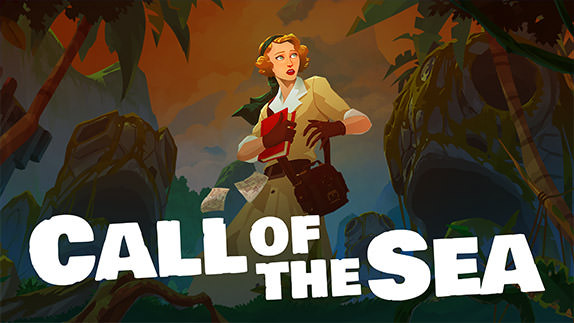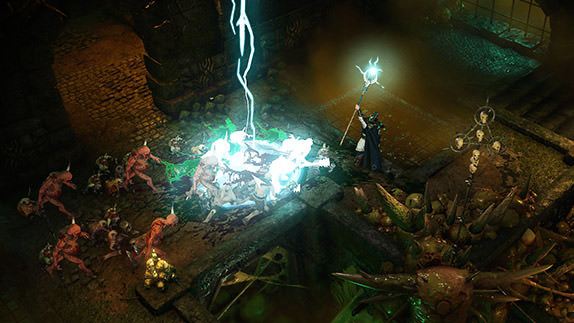Assault Android Cactus Review

 By Kevin Mitchell
Posted on March 8, 2016
By Kevin Mitchell
Posted on March 8, 2016
Although there is a certain stigma attached with twin-stick shooters for being overly complicated, the vibrant arena shooter Assault Android Cactus is easily accessible. With the help of nine playable Androids with distinct play styles and personalities, you’ll battle countless waves of robots across dynamically shifting stages. Released on PC last year, the PS4 version of the game runs silky smooth even when the already chaotic action intensifies.
The main campaign mode features 25 stages, set across five uniquely designed worlds each with a massive end boss. The challenge in the game comes from competing with others on the online leaderboards. It won’t be long before you complete the campaign, but this is where the game opens up, and the thrill of chasing the high-score becomes real. I didn’t think about my score the first time through, but replaying previous levels with new characters awoke the competitive nature in me.
Most games of the genre focus on defensive gameplay, but Assault Android Cactus requires players to play offensively, although smartly. Unlike the majority of bullet-hell games, your characters are able to be hit multiple times before being incapacitated. This is greatly appreciated, as you don’t have to worry about having ungodly reflexes with bullets flying across the screen, although it certainly doesn't hurt. It doesn’t take much effort to revive yourself, but you’ll lose all of your power-ups and your combo chain. The only way to lose is if you run out of battery power. Batteries drop from enemies occasionally, so ensuring you keep destroying robots is a must.
Chasing the high-score on the leaderboards isn’t for everyone and developer Witch Beam has included a plethora of additional content and unlockables for those players. Of course, you can play through everything in the game cooperatively with up to four players, but the extra game modes are a treat. In Infinity Drive, you’ll face endless waves of robots and bosses, think of it as a horde mode, while Daily Drive pits you against a new challenge every day. The Daily Drive can only be attempted once per day, but you’ll get additional chances to complete it if you have additional players.
You’ll most likely spend most of your time trying to improve your score and rank on each level. Just barely missing on an S rank, and being stuck with an A rank kept me replaying levels multiple times. Earning an S rank requires you to complete the level without being knocked down, but obtaining the legendary S+ rank requires you to complete the entire level by killing every enemy in a single uninterpreted combo chain. Considering you only have a couple of seconds to keep the chain from breaking, you’ll have to perfectly time your secondary weapon use. The secondary weapons are powerful, and game changing but are stuck on a cooldown. In a game where the score is the driving force behind the end-game content, you must learn when to use them and when to focus on your primary attack.
Enemy designs become more ferocious the further you get into the game, and at the tail end of levels when the action speeds up you’ll face dozens of robots of all sizes. Giant Titan-sized enemies can launch explosive spiked balls at you, four-legged dog-sized robots can tether you in place, and flying drones can pester you from the above.
All enemies drop energy orbs that power up your primary attack, but if you are knocked down, you will lose all of your orbs, not to mention any current power-up. The power-ups are integral to achieving a high score, and selecting the right one should be determined by the action. The additional firepower power-up adds two spherical drones that can chew through enemy robots with ease. The speed power-ups increase your movement speed, while the final power-up freezes all enemies for a limited amount of time.
All of the characters have unique play styles, and based on the level designs and bosses you encounter, you may want to change your character. The original Androids are easier to control, and the unlockable characters are for players who have more experience in the game. The starting character, Cactus, has an assault weapon, and when things get tough, she can pull out a flamethrower and burn through metal like a hot knife through butter. One of the unlockable characters, Aubergine, has a helicopter drone that she pilots independently to her movement, which is an excellent choice if you want to hide behind a pillar. Her secondary weapon is also my favorite attack in the game, launching a black hole. Peanut, the final character features a magma gun, spewing lava across surfaces.
You’ll earn game credits that can be used to purchase artwork and bonus content, some of which disables your score. The first-person mode changes the game’s dynamics, same as switching the view to an action-RPG isometric angle, plus new filters that make amendments to the game's visuals. I especially enjoyed the inclusion of the “JJ” filter which alters the visual flair in the game, with additional bloom and lens flares.
As much as I enjoyed my time playing Assault Android Cactus, I’m disappointed that Witch Beam wasn’t able to add online multiplayer to the PS4 release. I understand that they are a very small indie team, but hopefully, it is something that can be looked into for future games. You should be able to play at least with two players online using the built-in PS Share option on the PlayStation 4.
Simply Put
Assault Android Cactus is a charming and addicting twin-stick shooter with personality. Each of the nine characters is unique enough to warrant playing through levels multiple times to chase the high-scores. The additional modes, including daily challenges, provides plenty of content after completing the campaign and the inclusion of the EX options adds variety to the experience.
Note: Assault Android Cactus was reviewed on PC. A digital copy of the game was provided by the publisher/developer.




